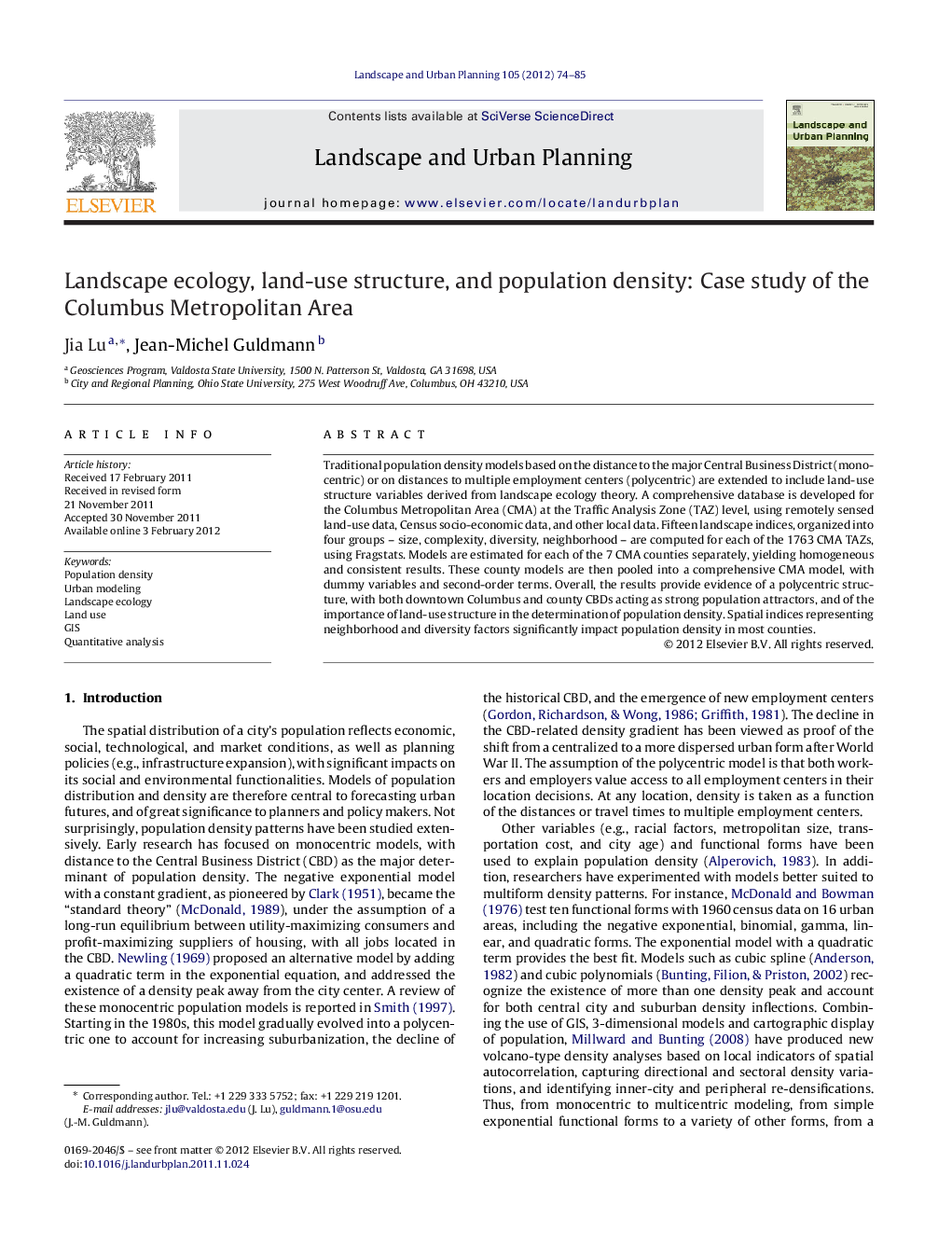| کد مقاله | کد نشریه | سال انتشار | مقاله انگلیسی | نسخه تمام متن |
|---|---|---|---|---|
| 1049583 | 1484650 | 2012 | 12 صفحه PDF | دانلود رایگان |

Traditional population density models based on the distance to the major Central Business District (monocentric) or on distances to multiple employment centers (polycentric) are extended to include land-use structure variables derived from landscape ecology theory. A comprehensive database is developed for the Columbus Metropolitan Area (CMA) at the Traffic Analysis Zone (TAZ) level, using remotely sensed land-use data, Census socio-economic data, and other local data. Fifteen landscape indices, organized into four groups – size, complexity, diversity, neighborhood – are computed for each of the 1763 CMA TAZs, using Fragstats. Models are estimated for each of the 7 CMA counties separately, yielding homogeneous and consistent results. These county models are then pooled into a comprehensive CMA model, with dummy variables and second-order terms. Overall, the results provide evidence of a polycentric structure, with both downtown Columbus and county CBDs acting as strong population attractors, and of the importance of land-use structure in the determination of population density. Spatial indices representing neighborhood and diversity factors significantly impact population density in most counties.
Figure optionsDownload as PowerPoint slideHighlights
► A new population density model combines traditional distance variables with land-use structure variables derived from landscape ecology theory.
► A GIS is used to integrate remotely-sensed land-use data with Census socio-economic data.
► Fifteen landscape indices are considered for inclusion into the model.
► Models are estimated at both county and metropolitan level.
► Spatial indices representing neighborhood and diversity factors have a significant impact on population density.
Journal: Landscape and Urban Planning - Volume 105, Issues 1–2, 30 March 2012, Pages 74–85